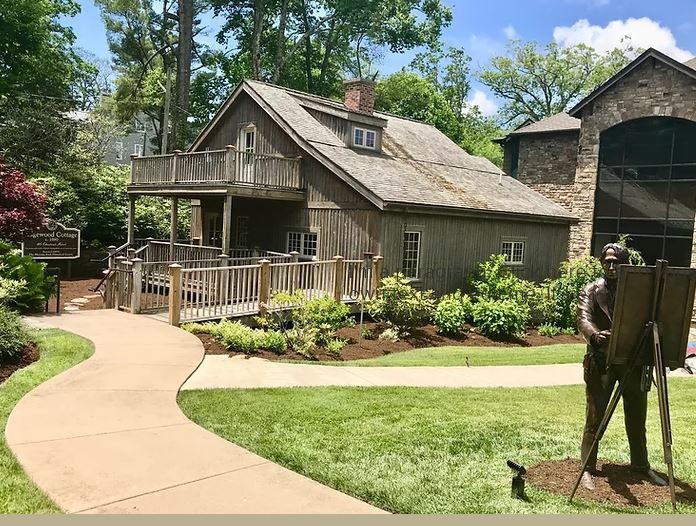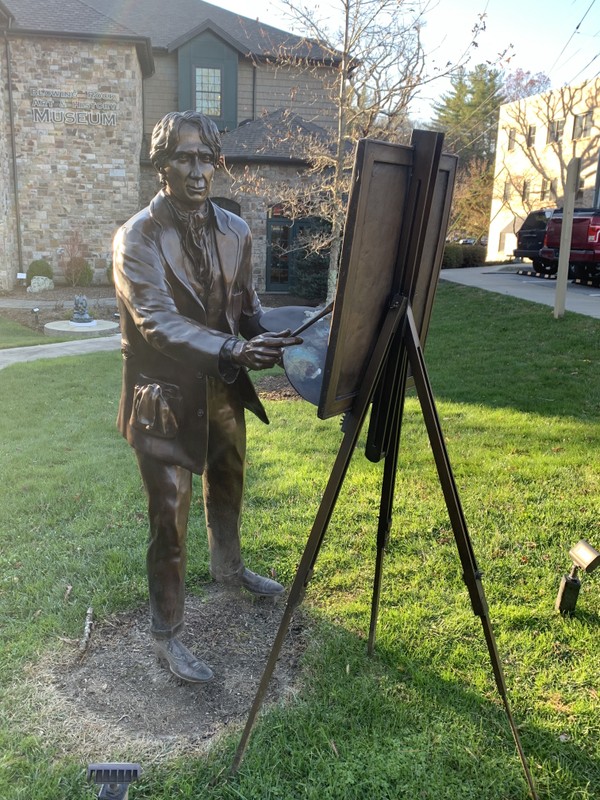Edgewood Cottage
Introduction
Text-to-speech Audio
Images
Edgewood Cottage


“Elliott Daingerfield en plein air”, bronze sculpture by Brenda Mauney Councill.

Backstory and Context
Text-to-speech Audio
In 1886, 25-year-old Elliott Daingerfield traveled to Blowing Rock to recuperate from diphtheria. Born in 1859 in Harpers Ferry, Virginia, Daingerfield moved with his family to Fayetteville, NC in 1861. By 1880 he had moved to New York City to pursue a career in painting and by the time he arrived in Blowing Rock he had become a celebrated painter and teacher. Daingerfield found great inspiration in the North Carolina mountains, eventually making Blowing Rock his summer home.
Daingerfield taught painting technique from his Edgewood Cottage studio in the summers and at the Philadelphia School of Design in the winters. Several of his Philadelphia students followed him to Blowing Rock and a few became members of the renowned “Philadelphia Ten.” However, while summering in Blowing Rock the locals dubbed the students the “paintin’ ladies.”
After the completion in 1900 of Windwood, Daingerfield’s second Blowing Rock home, Edgewood Cottage was occupied by another famous artist, Mr. Jean Jacques Pfister who was known for his landscape paintings and head of the art department at Rollins College.1
A deeply religious man, Daingerfield felt a strong link between nature and spirituality. Believing that “art was a vehicle of God’s expression.” 2 He turned to religious painting in the late 1800’s and generously donated the painting St. Mary, the Virgin to the St. Mary of the Hills Episcopal Mission which stands across Main Street from Edgewood Cottage.
Daingerfield spent nearly every summer of his life in Blowing Rock until his death in 1932.
Sources
- Buxton, Barry. Burns, Jerry. Jones, Robert. Village Tapestry: The History of Blowing Rock. Boone, NC. Appalachian State University Press, 1989. p 61
- Blowing Rock Galleries. Accessed August 8th 2020. https://www.blowingrockgalleries.com/elliott-daingerfield.
https://www.blowingrockhistoricalsociety.com/
